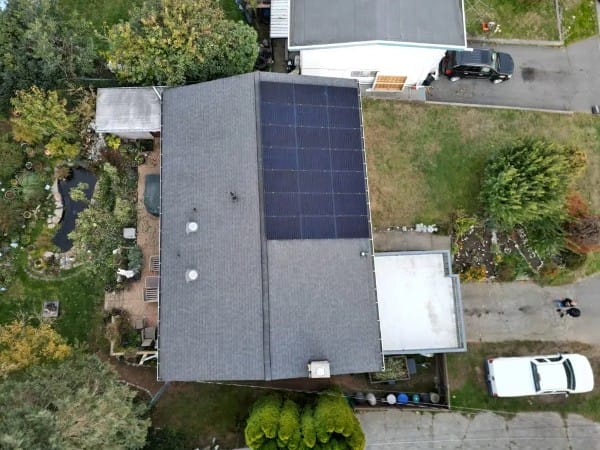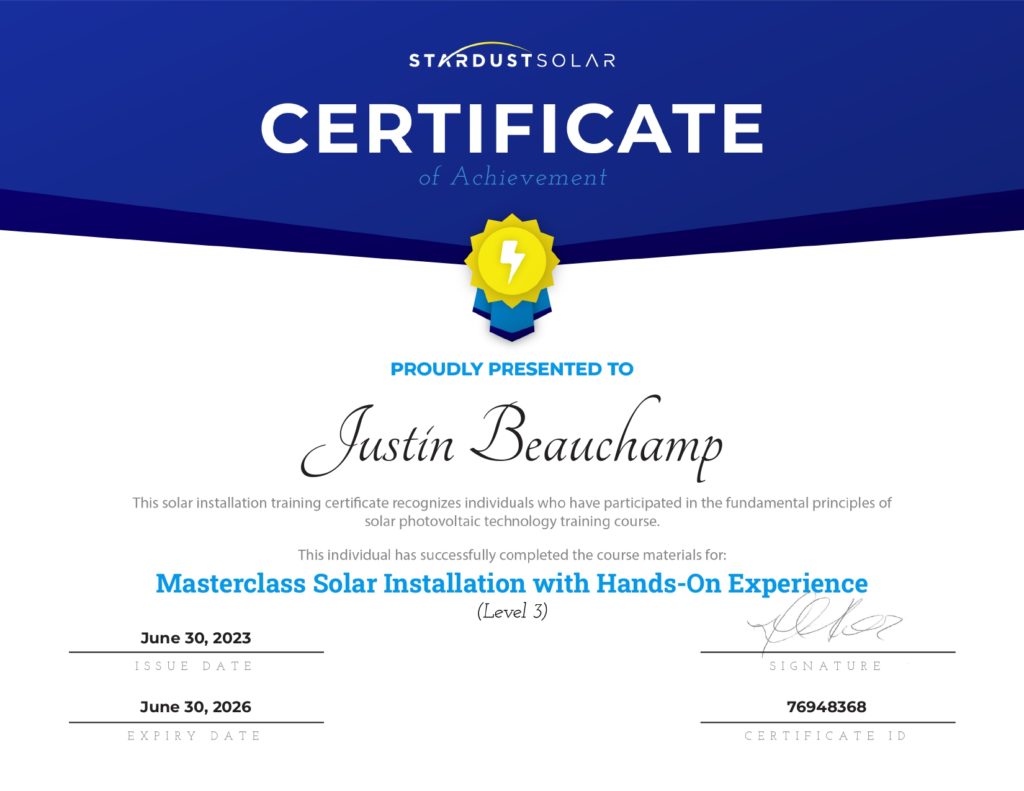Canada is renowned for its predominantly cold climate. This reputation gives the impression that the country, with its cold conditions, is not solar energy friendly. However, one fact remains true: cold climates provide ideal conditions for maximizing the efficiency of solar panels. The latest statistics and research studies even showcase the expansion of solar industry in wintery regions.
A study conducted by Carbon Brief, analyzing data from the IEA’s Renewables 2023 report, reveals that the world is currently poised to construct sufficient renewable energy sources, such as from the sun and wind, within the next five years to generate power equivalent to that of the United States and Canada combined.
Finding the right solar system company and learning about the truth behind the efficiency of solar panels in wintery regions are keys to enjoying the benefits of renewable energy.
Viability By Statistics and Research
Statistical data and scientific research provide compelling evidence supporting the efficiency of solar panel systems in harnessing energy from sunlight, even amidst colder temperatures and challenging weather conditions.
Exploring the Numbers
The Canadian Renewable Energy Association (CanREA) reports that the solar energy sector experienced a notable growth of 13.6%, adding 288 MW to Canada’s solar capacity. It now stands at 2,399 MW compared to 2,111 MW in 2020.
Canada witnessed the development of over 50 solar energy storage projects, predominantly concentrated in Ontario. These projects led to a utility-scale rechargeable solar energy storage capacity exceeding 160 MWac.
What the Research Shows
Contrary to what many people think, installing solar panels doesn’t work well in hot weather. Studies have shown that solar panels become less efficient at producing electricity when temperatures rise. Tested at 25 degrees Celsius, the efficiency of the solar panel system can drop by 10% to 25% if it gets too hot.
As the solar panel heats up, its electricity increases quickly, but its voltage decreases. This change in voltage helps measure the temperature accurately.
Project Name: SuSolTech – Research Centre for Sustainable Solar Cell Technology.
SINTEF’s climate lab experiments demonstrate that solar panel installation performs effectively in Norway’s rainy and cold conditions, with findings also applicable to Canada.
- Cold temperatures increase the output of a solar panel installation, which is effective even in winter.
- Solar panels work well in cold weather, keeping their operational temperature low.
- High temperatures increase “internal energy leakage” in a solar panel installation, reducing output by about 0.3% per degree.
- Voltage, which mobilizes electrons, increases in cold weather, leading to higher output.
- Solar radiation, incredibly intense in winter with snow reflection, combines with cold weather to produce optimal output.
- Surprisingly, solar cells performed well in light rain, as rain did not affect incoming radiation.
How Exactly Does Solar Work During Winter?
It surprises individuals to discover that solar panels continue to operate effectively during winter, even amidst the frequent snowstorms common in the Northeast. Shorter daylight hours and snow accumulation can impact the output of a solar panel installation.
However, the increased efficiency of solar panels in colder months, coupled with the surplus solar energy generated during summer, ensures that your solar panel installation will still produce power and meet its estimated output throughout the winter season.
Debunking Myths and Exploring The Advantages
Myths Versus Facts
| Myths | Facts |
| Solar technology doesn’t work in cold climates because they need more direct sunlight. | Solar equipment works in indirect sunlight and performs better in cold climates due to improved conductivity and reduced resistance. |
| Cold temperatures decrease the efficiency of solar panels, making them impractical in regions with long winters. | Cold temperatures boost solar panel efficiency by lowering resistance in electrical circuits. |
| Snow accumulation on solar panels renders them ineffective, making them unsuitable for cold climates. | Snow on solar panels temporarily reduces output but melts quickly due to dark surfaces and design, boosting energy production after melting. |
| Solar panels cannot generate enough energy during cold weather to meet household or commercial needs. | Solar panels produce significant electricity in cold weather with minimal efficiency loss. |
| Solar panel installation upfront cost in cold climates outweighs the potential energy savings, making them economically unfeasible. | You can save money as solar panels have incentives and decrease installation expenses despite higher initial energy costs, with added property value benefits. |
Advantages and Considerations
Energy Boost
Cold temperatures boost solar energy production despite shorter daylight hours.
Sunlight Generation
Sunlight, not heat, allows solar panels to generate electricity, performing best on bright, cold days.
Defies Light Snow Cover
Light snow cover doesn’t hinder sunlight from reaching solar panels, maintaining solar energy production.
Bifacial Module Feature
Bifacial modules gain efficiency post-snowstorm, ideal for areas prone to ice, snow, or hail.
Angled Installation
Solar panels’ angled installation allows snow to slide off easily.
Single-Axis Structures
Most efficient panels have single-axis structures with monitoring systems that adjust solar panel positions to facilitate snow removal.
Dark Cell Surfaces
Dark cell surfaces attract heat and aid in snow removal on solar panels once they slide off at a 30º angle.
Voltage Output
Wind enhances solar panel voltage output in lower temperatures by carrying away heat and reducing cloud cover.
Solar Power Tips and Tricks During Winter
Maximizing A Solar Energy System
If you’re in a snowy area and considering solar panels, here are tips for a successful solar power system.
-
Angle Solar Panels
Optimize sun exposure by angling solar panels steeply to allow snow to slide off.
-
Keep Clean
Regularly clean solar panels to prevent snow and debris from blocking sunlight.
-
Anti-Reflective Coatings
Enhance solar energy generation by using coatings on solar panels to reduce snow reflection.
-
Micro-Inverters
Improve efficiency and minimize snow impact with micro-inverters.
-
Ground-Mounted Systems
Consider a ground-mounted solar panel system for easier maintenance and better angle adjustments.
Dealing with Solar Panel Snow and Ice Buildup
-
Broom or Soft Brush
Gently sweep snow off solar panels using a soft-bristled brush or broom to prevent damage.
-
Heating System
Consider installing an electric heating pad or hot water system to melt snow and ice buildup on your solar products.
-
Tilt System
Adjust the angles of the solar panels with a tilt system to optimize sun exposure and aid snow shedding.
-
Snow Rake
Use a specialized snow rake that works quite well in gently removing snow without harming solar panels.
-
Self-Cleaning System
Explore self-cleaning systems offered by solar panel companies that use water and gentle solar solutions. These systems help maintain panel cleanliness and functionality.
Solar System Design for Heavy Snow Loads
- Select Durable Equipment
Choose solar panels, inverters, and other components specifically designed to withstand heavy snow loads, ensuring they are certified for use in snowy climates. - Ensure Proper Solar Panel Installation
Securely attach and install solar panels to roofs or mounting systems and seal all electrical connections to protect against moisture. - Optimize Panel Angle
Consider installing solar panels at a steeper angle to facilitate snow shedding in areas with heavy Snowfall. - Use Strong Mounting Systems
Utilize robust mounting systems designed to withstand heavy snow loads and securely support solar panels on solar roofs or the ground.

Embrace the Power of the Winter Sun
Discovering the truth about solar panels in cold climates is critical to unlocking the potential of renewable energy for your home or business. Solar systems thrive in snowy conditions, strengthen the power grid, ensure excess energy, and provide year-round reliable and sustainable energy usage.
Embrace renewable energy solutions tailored to colder regions for a brighter and greener future with a reputable solar panel installation company like MAG Solar.
Frequently Asked Questions
Are there specific types of premium solar panels recommended by solar providers for cold climates?
Yes. Top solar companies highly recommend monocrystalline and polycrystalline panels, which are ideal for cold climates due to their durability and efficiency in low-light conditions. These solar panels are designed to withstand temperature fluctuations and maintain performance in colder temperatures.
Can I connect a solar panel to a battery system for energy storage in cold climates?
You can connect a solar panel installation to a battery system for energy storage in cold climates. Get in touch with a solar panel installation company to find solar batteries designed for cold weather. It is vital to protect solar batteries from extreme cold for optimal performance and longevity.
What is a solar loan, and how does it benefit solar customers?
A solar lease is a financial product tailored to finance a solar panel installation. It allows solar customers to cover the upfront costs of purchasing and installing solar panels while spreading out payments over time. The Canadian Solar Industries Association promotes the availability of solar loans, which enable homeowners and businesses to enjoy the immediate benefits of a solar energy system, such as reduced energy bills.

